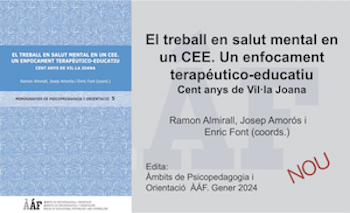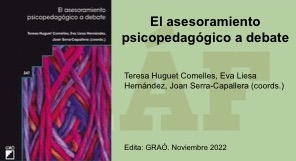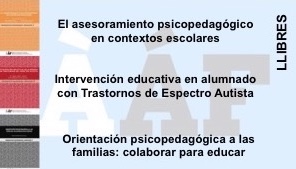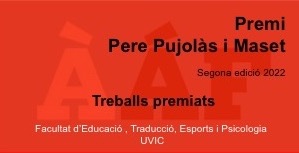“Butter fingers”. Interdisciplinary approach to students with behavior disorders
Keywords:
Behaviour Disorder, multidisciplinary approach/interventionAbstract
Behaviour disorders (BDs) have a high prevalence in children, are characterized by a high heterogeneity in terms of their aetiology and clinical manifestations and have an important impact on their socialization groups (family, school) as well as on the child.
BDs require an intensive, transversal and interdisciplinary approach and a co-responsibility of functions among the different intervention resources is necessary. In this line, a training program for teachers has been promoted in Granollers where the methodology used is the "case construction" trying to create a "shared view" between clinical and pedagogical aspects and the horizontal transmission of knowledge between the two areas. We present the case of an 8-year-old boy diagnosed with severe BD associated with an Autism Spectrum Disorder, from the point of view of his teacher and reflections are made from the educational and mental health fields. Important components with "therapeutic power" are identified and developed in the BD intervention: the teacher-student relationship, where the teacher represents a positive attachment figure; the creation of a coordinated multidisciplinary team that allows for a proximity approach focused on the needs of the child; the need for functional understanding of behaviour in emotional terms; the use of universal intervention measures from which all students benefit and facilitate the inclusion of the child; the need for "care" and accompaniment to the teacher. In addition, specific intervention, classroom and group management strategies are offered.
References
Bolea. E y Gallardo, A. (2012) Alumnado con dificultades para regular su conducta (II). Barcelona: Editorial Graó.
Davis, T. N., Durand, S., Fuentes, L., Dacus, S., y Blenden, K. (2014). The Effects of a School-Based Functional Analysis on Subsequent Classroom Behavior. Education y Treatment Of Children, 37(1), 95-110.
Direcció General d’Educació Infantil i Primària (2015) De l’escola inclusiva al sistema inclusiu Una escola per a tothom, un projecte per a cadascú, 2015. Generalitat de Catalunya Departament d’Ensenyament.
Dufrene, B. A., Lestremau, L., y Zoder-Martell, K. (2014). Direct behavioral consultation: effects on teachers' praise and student disruptive behavior. Psychology In TheSchools, 51(6), 567-580.
Geddes, H.(2010). El apego en el aula. Barcelona. Graó.
GREENE, Ross W., “El niño insoportable” Nuevo enfoque para comprender y educar a niños crónicamente inflexibles y que se frustran con facilidad. Ediciones Medici. Barcelona 2004.
Horner, Sugai, G. y Anderson, S. (2010) Examining the Evidence Base for School-Wide Positive Behavior Support. Focus on exceptional children, 42 (8), 1-14 111.
Hortal, C., Bravo, A., Mitjà, S. y Soler, J. M. (2011). Alumnado con trastorno del espectro autista. Barcelona: Graó.
Keller, L. E. (2011). Repairing links: Building attachments in the pre school classroom. Journal Of The American Psychoanalytic Association, 59(4), 737-763. doi:10.1177/0003065111417624
Lasa-Zulueta, A. (2016). Adolescencia y Salud Mental. Madrid: Grupo 5
Lasa-Zulueta, A. (2001). Hiperactividad y trastornos de la personalidad. Cuadernos de Psiquiatría y Psicoterapia del Niño y del Adolescente, 31/32, 5-81.
Nurmi, J. y Kiuru, N. (2015). Students’ evocative impact on teacher instruction and teacher–childrel ation ships. International Journal Of Behavior al Development, 39(5), 445-457.
Pla Director de Salut Mental i Addiccions de Catalunya (2016). Generalitat de Catalunya. Departament de Salut.
Preciados, J. y Sugai, G. (en prensa) Apoyo Conductual Positivo Escolar: Características Fundamentales. Suports. Revista Catalana de Educación Especial i Atenció a la Diversitat.
Saumell, C., Alsina, G. y Arroyo, A. (2011). Alumnado con dificultades para regular su conducta (I). Barcelona: Editorial Graó.
Ubhaa, N. y Cahillb, S. (2014) Building secure at tachments for primary school children: a mixed methods study. Educational Psychology in Practice, 30, No. 3, 272–292.
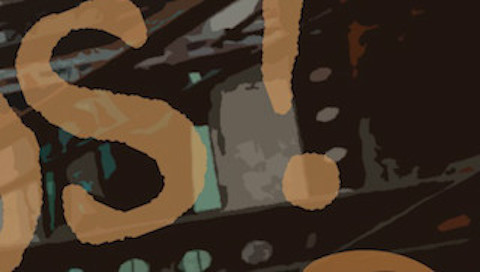
Downloads
Published
Issue
Section
License
The authors maintain their copyright and give the right to the first publication of the work to the journal, registered under a Creative Commons Attribution-Non Commercial-NoDerivs license. This license allows others to download the works and to share them with others as long as they credit the author, but it does not allow for any kind of modification or commercial use.



